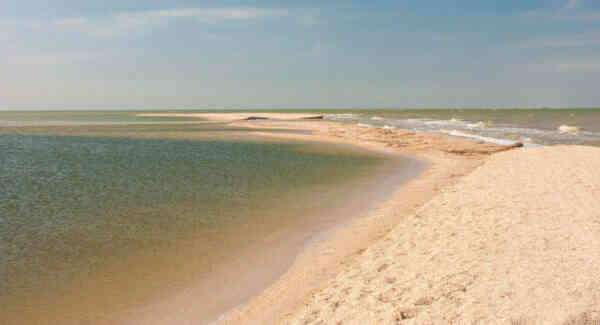There are numerous resorts on the shores of the Sea of Azov that have been popular since the times of the USSR. Being rather shallow, it warms up well in the summer months, which pleases lovers of swimming in warm water and lying on the beach. At the same time, vacationers do not even suspect that a stormy life is in full swing in the depths of the sea, and somewhere beyond the horizon, numerous ships ply it.
Interesting facts about the Sea of Azov
- This is one of the youngest seas. It was formed about 7700 years ago.
- Often here you can observe luminous waves. This is all because of the luminous microorganisms that live in local waters. By the way, a similar picture was observed in the Sea of Okhotsk (interesting facts about the Sea of Okhotsk).
- Among all the seas of the world, Azov is the shallowest, with an average depth of only 7 meters, and a maximum depth of 13.5 meters.
- The ancient Greeks called it the Meotian Lake, and the ancient Romans called it the Meotian swamp.
- In the summer heat, the surface layer of water in the Sea of Azov heats up to +30 degrees, or even more.
- It is more distant from the nearest ocean than any other sea on Earth (interesting facts about the seas).
- In winter, the Sea of Azov is covered with ice. Sometimes partially, and sometimes completely.
- The water in some parts of it is so fresh that even freshwater fish live there, in particular, pikes (interesting facts about pikes).
- According to regular measurements, the water level in the Sea of Azov is decreasing year by year.
- In winter, the temperature of the deep layers of water here does not reach the freezing point, just a few degrees. In summer, even near the bottom, it is usually higher than +20.
- Sometimes storms rage over the Sea of Azov, but here waves whose height would exceed 4 meters have never been recorded.
- Particularly lucky tourists sometimes they can see dolphins living in local waters.
- The wind over the surface of the Sea of Azov is stable throughout the warm season, and sometimes it overtakes water so that its level near the coast rises by one and a half to two meters.
- Its waters are about three times less salty than the waters of other seas.
- There is 95 times more water in Lake Baikal than in the Sea of Azov.
